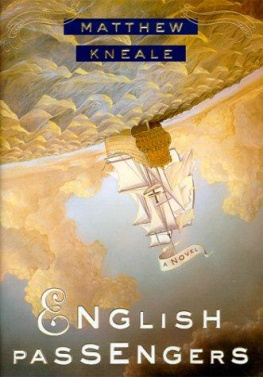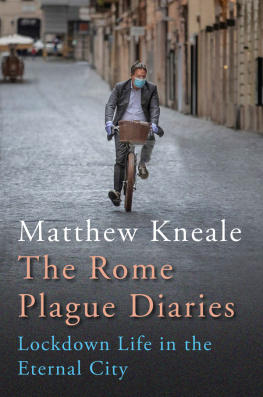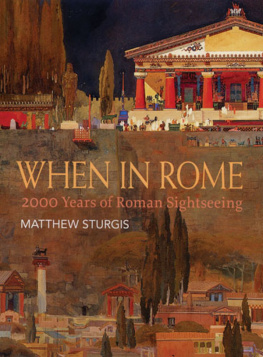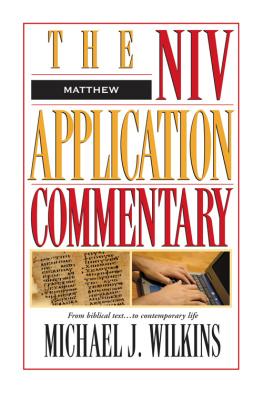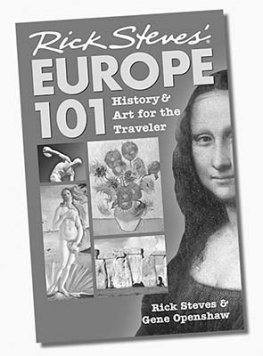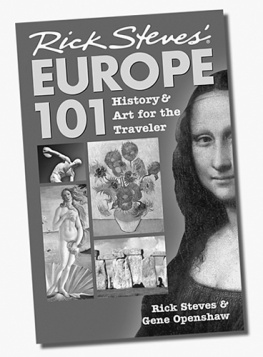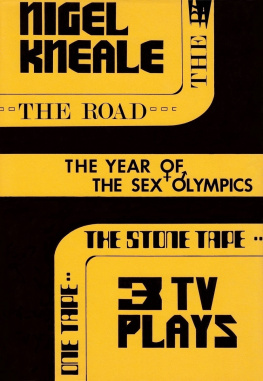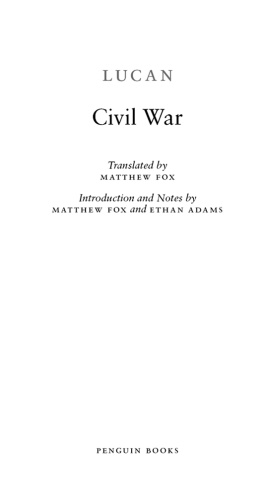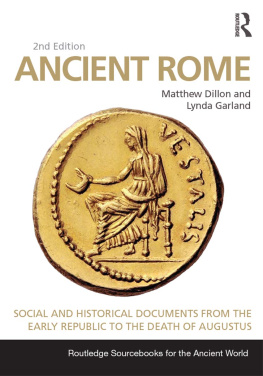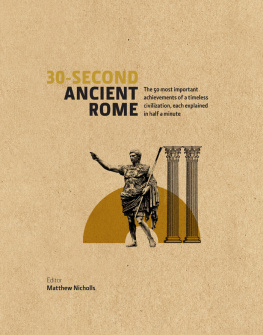Matthew Kneale - Rome: A History in Seven Sackings
Here you can read online Matthew Kneale - Rome: A History in Seven Sackings full text of the book (entire story) in english for free. Download pdf and epub, get meaning, cover and reviews about this ebook. year: 2017, publisher: Atlantic Books, genre: History. Description of the work, (preface) as well as reviews are available. Best literature library LitArk.com created for fans of good reading and offers a wide selection of genres:
Romance novel
Science fiction
Adventure
Detective
Science
History
Home and family
Prose
Art
Politics
Computer
Non-fiction
Religion
Business
Children
Humor
Choose a favorite category and find really read worthwhile books. Enjoy immersion in the world of imagination, feel the emotions of the characters or learn something new for yourself, make an fascinating discovery.

- Book:Rome: A History in Seven Sackings
- Author:
- Publisher:Atlantic Books
- Genre:
- Year:2017
- Rating:4 / 5
- Favourites:Add to favourites
- Your mark:
- 80
- 1
- 2
- 3
- 4
- 5
Rome: A History in Seven Sackings: summary, description and annotation
We offer to read an annotation, description, summary or preface (depends on what the author of the book "Rome: A History in Seven Sackings" wrote himself). If you haven't found the necessary information about the book — write in the comments, we will try to find it.
Rome: A History in Seven Sackings — read online for free the complete book (whole text) full work
Below is the text of the book, divided by pages. System saving the place of the last page read, allows you to conveniently read the book "Rome: A History in Seven Sackings" online for free, without having to search again every time where you left off. Put a bookmark, and you can go to the page where you finished reading at any time.
Font size:
Interval:
Bookmark:

By the same author
Fiction
Mr Foreigner
Inside Roses Kingdom
Sweet Thames
English Passengers
Small Crimes in an Age of Abundance
When We Were Romans
Non-fiction
An Atheists History of Belief

For Alexander and Tatiana our two young Romans
CONTENTS
NOTE ON NAMES
For the sake of clarity and continuity I have referred to Romes hills and churches by their modern, Italian names, even when looking at early centuries when Latin would have been used. I have made one exception: St Peters is so well known by its English title that it seemed wrong to refer to it as San Pietro.
ILLUSTRATIONS AND MAPS
Black and white illustrations
First colour section
Second colour section
MAPS
INTRODUCTION
T HERE IS NO CITY LIKE ROME. No other great metropolis has preserved its past so well. In Rome you can cross bridges that were crossed by Cicero and Julius Caesar, you can stand in a temple nineteen centuries old or walk into a church where a hundred popes have celebrated mass. As well as the citys famous sights the fountains, the Pantheon, the Colosseum, St Peters, the Sistine Chapel you can also see Mussolinis Fascist propaganda, much of it still intact. The Romans have even kept the citys Gestapo headquarters from the Nazi occupation. That so much has survived is all the more remarkable considering what Rome has endured over the centuries: dozens of catastrophic floods, fires, earthquakes, plagues and, most of all, attacks by enemy armies.
When I first came to Rome at the age of eight I had never seen a city that had so much of its past on show. My fascination grew and as I became older I returned many times. For the last fifteen years I have lived in Rome, studying it and getting to know every stone of the city. I realized I wanted to write about Romes past and show how it has become the city it is today: to tell the citys whole story from three thousand years ago to present times.
There was a problem. Romes past is a vast subject. The city has changed so greatly that there have been many Romes, each of which would be largely unrecognizable to Romans of other times. Books that try to recount the citys entire history tend to suffer from being too long, and yet also too hurried, as they struggle to race through events. Much of my writing has been fiction, and novels, among many other things, require a strong, clear structure. I began wondering what structure could be used to frame Romes history while avoiding an endless stream of and thens. An idea came to me: focusing on a handful of moments throughout the citys existence moments that changed the city and set it on a new direction. Sackings were the obvious choice. As Romans ruefully observe, Rome has had no shortage of them.
Seven seemed a good number. Seven hills, seven sackings. I found the ones that were most important to Romes history, and which also fell at moments when the city had a character wholly distinct from other eras. I began to envisage how each chapter could be told, like a story. First, we would see the enemy advancing on the city and we would learn who they were and what had brought them. Next, we would pause and look at what the city had been like before the crisis had begun, when it still enjoyed a sense of normality. We would be presented with a kind of vast postcard from Rome describing what it looked like, felt like and smelt like; what Romans rich and poor owned; what united and divided them; what their homes were like; what they ate; what they believed; how clean they were; how cosmopolitan; how they amused themselves; what they thought about sex; how their men and women treated one another; and how long they could expect to live. Along the way we would see how Rome had changed since the last postcard and so like joining the dots in a puzzle we would glimpse the citys whole history. Finally, we would return to the drama of the sacking, discovering how the enemy broke into the city, what they did there and how Rome was changed by what took place.
I have been researching this book for fifteen years. It has been a pleasure to write as it has allowed me better to understand a city which, for all its flaws, I greatly love, and which I find no less fascinatingnow than I did when I first came here as a child. In these strange days when our world can seem fragile I have also found something rather reassuring in Romes past. Romans repeatedly shrugged off catastrophes and made their city anew, adding a new generation of great monuments. Both peace and war have played their part in making Rome the extraordinary place it is today.
Rome, 2017

CHAPTER ONE
GAULS
I
F OURTEEN KILOMETRES NORTH of Rome where the river Tiber winds and turns through a small plain, it is joined by a tiny tributary no more than a brook called the Allia. These days it is a hard spot to notice. Beyond the Tiber trucks roar down the A1 motorway and high-speed trains hurry north to Florence and Milan. A dose of imagination and probably a set of earplugs, too is required to see this for what it once was: a battlefield. Here, in the year 387 BC on the 18th of July, a day the Romans would long consider unlucky, the full army of the Roman Republic, of between six and a half and nine thousand men, drew up to fight. Before them advanced an army of Gauls.
The Romans would have looked more impressive. Their soldiers were in formation and equipped with metal helmets, armour, long spears and large round shields. They used tactics invented by the Greeks, in which shields and spears formed a formidable barrier. As the enemy struggled to break through, the Romans would strike low with their spears, jabbing at legs, stomachs and groins, and then stabfrom up high, at necks and faces. Warfare two and a half thousand years ago was brutally up close.
By comparison, the Gauls were an undisciplined horde. Few, if any, women and children would have held back to watch the battle. This was not a tribe on the move but a war band looking for trouble, glory and treasure. Like any wandering army of this time its warriors would have stunk and been infested with lice. Though little can be said with absolute certainty about this early period, we can surmise a good deal about them. Some would have been on foot, some on horseback and others would have ridden two-man chariots that could whisk them to a key part of the battlefield. They would have been armed with small rectangular shields, swords and spears, and worn finely crafted helmets. They would have had long hair, moustaches and worn torques around their necks. Yet more noticeable was what they were not wearing. While some would have been clothed, others probably wore nothing but a belt or cloak. Later sources confirm that Gauls sometimes fought naked as they believed that this would make them more terrifying to the enemy.
Finally, they would have been confident. At this moment Celtic-speaking Gauls dominated Europe. To get an idea of the extent of their territories one has only to look to regions named Galicia, meaning land of the Gauls. One Galicia can be found in north-western Spain, a second in the Ukraine and a third in Turkey. And, of course, there is Wales, whose French name is the same again: Pays des Galles
Font size:
Interval:
Bookmark:
Similar books «Rome: A History in Seven Sackings»
Look at similar books to Rome: A History in Seven Sackings. We have selected literature similar in name and meaning in the hope of providing readers with more options to find new, interesting, not yet read works.
Discussion, reviews of the book Rome: A History in Seven Sackings and just readers' own opinions. Leave your comments, write what you think about the work, its meaning or the main characters. Specify what exactly you liked and what you didn't like, and why you think so.

